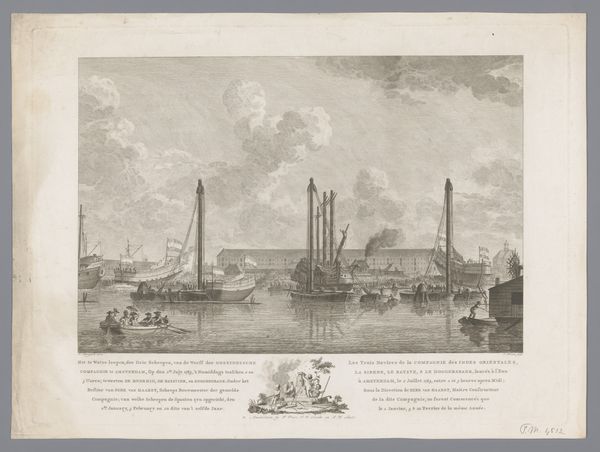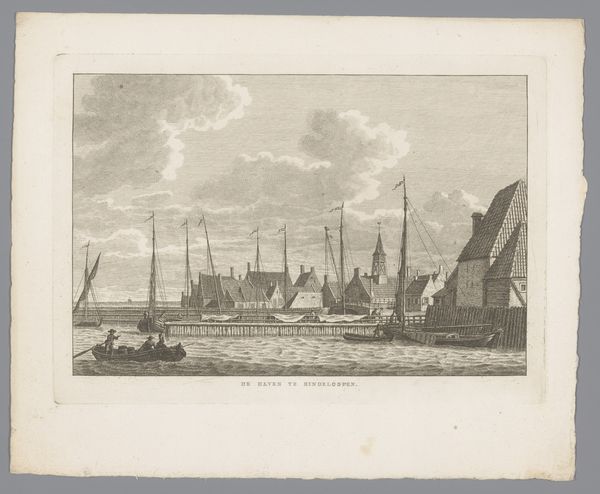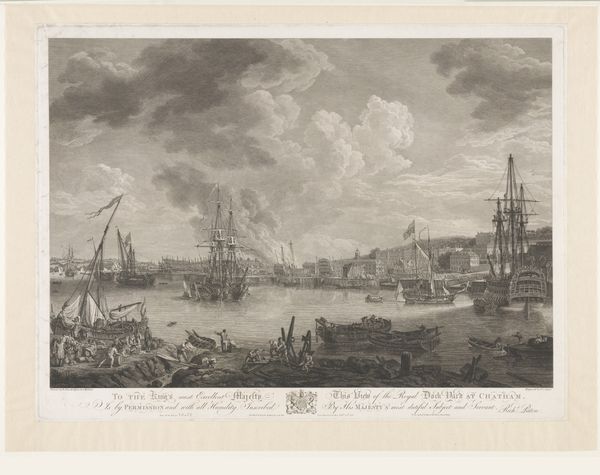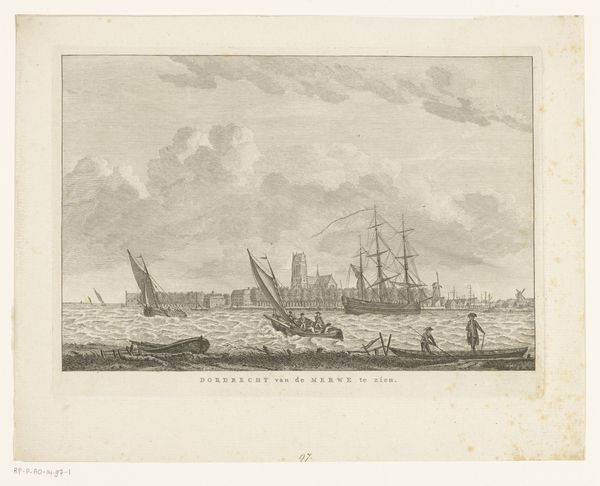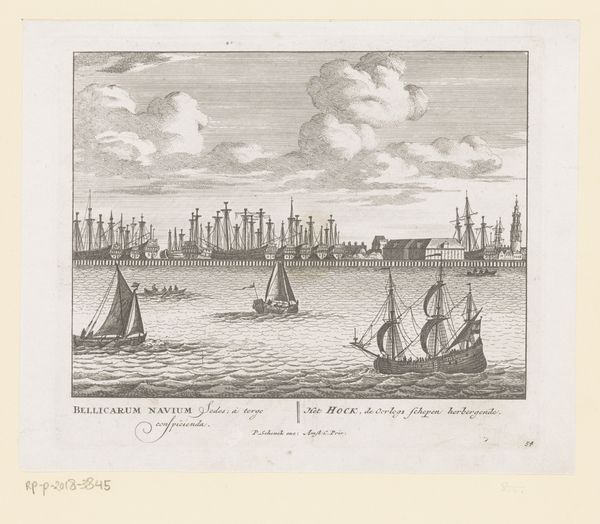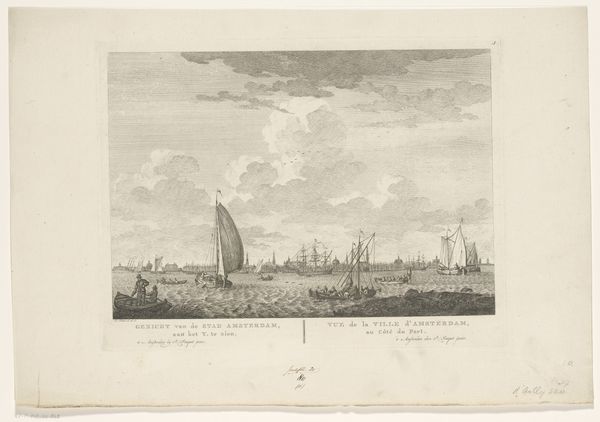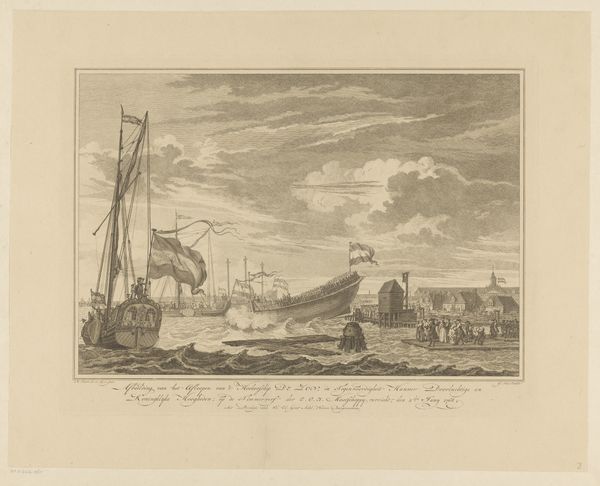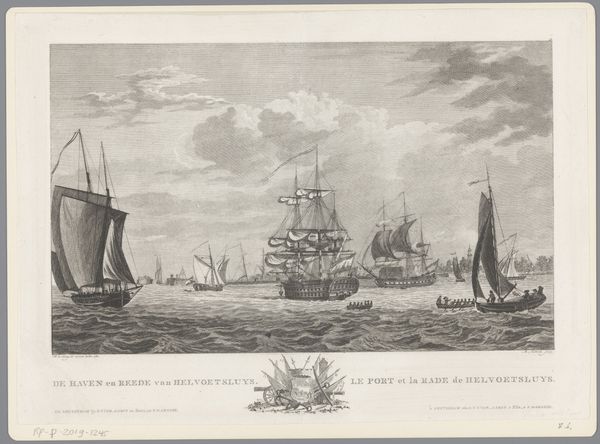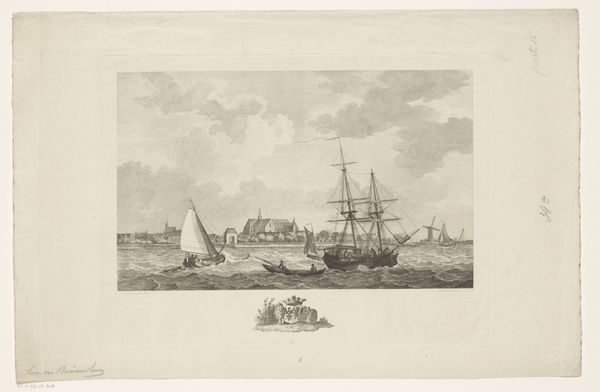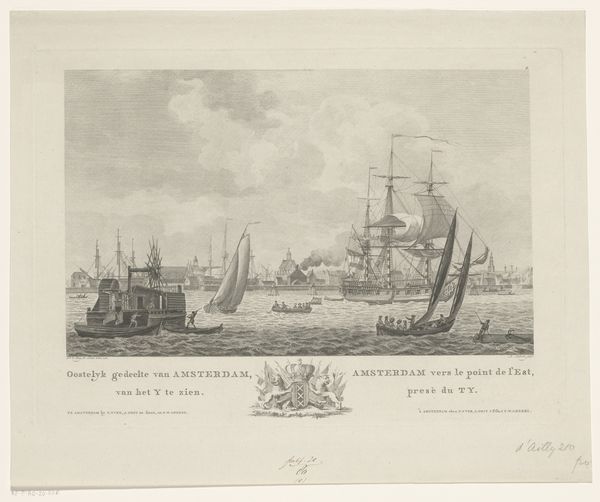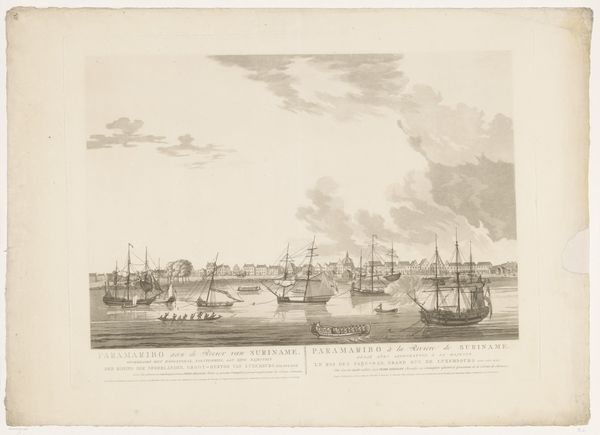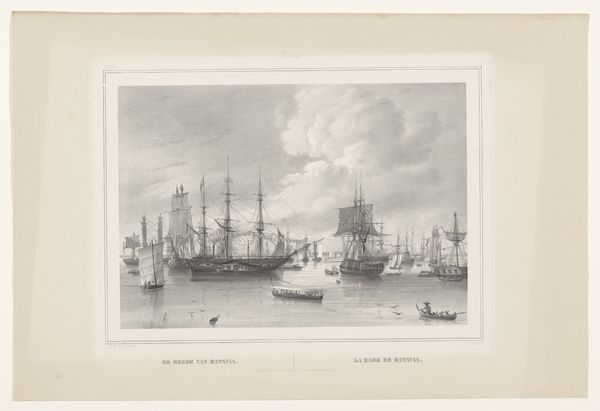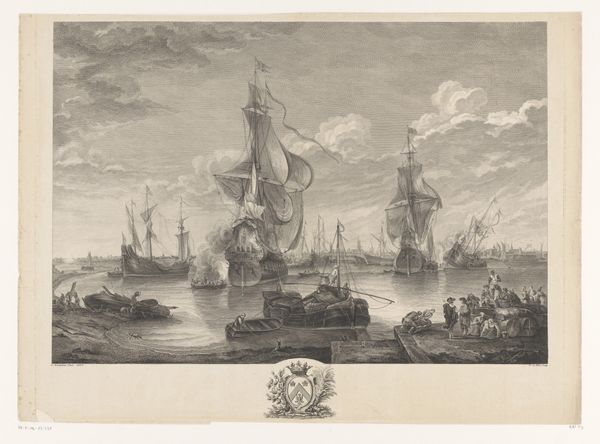
Dimensions: height 178 mm, width 248 mm
Copyright: Rijks Museum: Open Domain
Curator: This is Carel Frederik Bendorp's "Havenpoort van Harlingen," an etching and engraving likely made between 1786 and 1792, now held at the Rijksmuseum. What are your initial thoughts? Editor: Immediately, the sheer amount of meticulous labor involved strikes me. The density of fine lines suggests immense patience and skilled handcraft in rendering this Dutch harbor scene. Curator: Indeed. The print provides us a window into Harlingen, a vital port city, at the close of the 18th century. Notice how the architecture, especially the gate, anchors the scene. It's a portrayal of civic pride and maritime power. Editor: Absolutely. And I can almost smell the brine! The etching emphasizes the materiality of the harbor: the weathered wood of the ships, the stone of the quay, and the ropes that bind it all together. Consider how those materials would have shaped the lives and work of the people depicted. Curator: Precisely. Prints like these served a crucial public function at the time. Beyond being aesthetically pleasing, they circulated information. This particular print helps construct a shared identity, depicting Harlingen’s prosperity through trade. It subtly promotes the importance of its existence. Editor: And, despite the industrial activity shown here, I can't help but think about the embodied labor required to produce this very image. The labor involved in the physical making—biting the plate with acid, pulling the print. This work itself reflects 18th-century craft production. Curator: A point well taken. And while we consider the tangible act of creation, think also how images like these participated in creating the *idea* of the Netherlands during that time. It's less an objective record and more a constructed narrative of place and value. Editor: Agreed. When looking at such images, understanding how materiality and labor intertwine can reveal insights that more traditional art historical approaches might miss. Curator: I find, understanding the public life of images and what these works were used *for* during this time can equally change our experience in encountering it today. Editor: An artwork indeed situated within layers of meaning that, approached with the right understanding, may deepen our understanding of its nature.
Comments
No comments
Be the first to comment and join the conversation on the ultimate creative platform.
